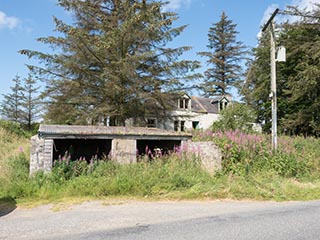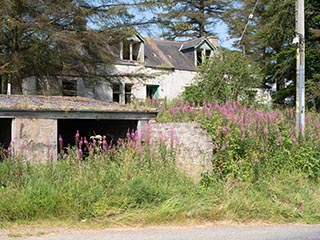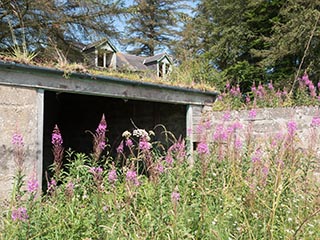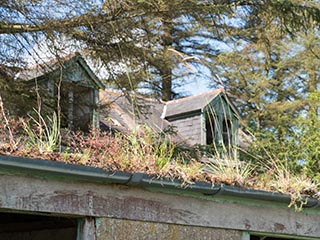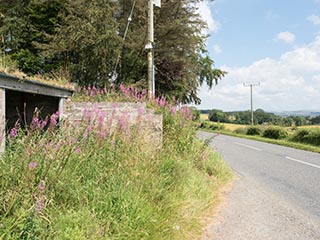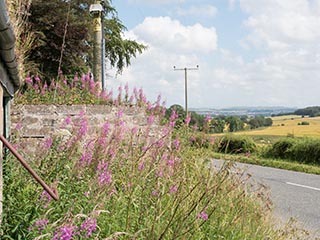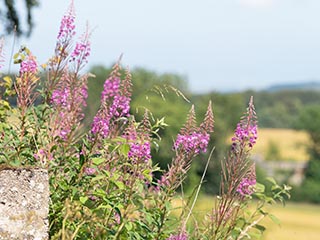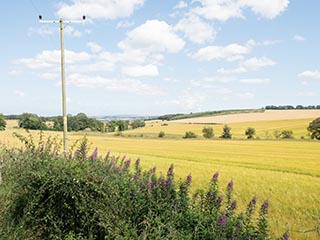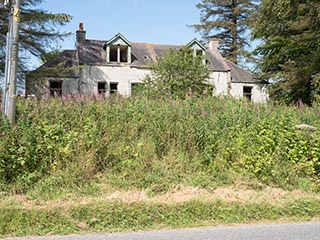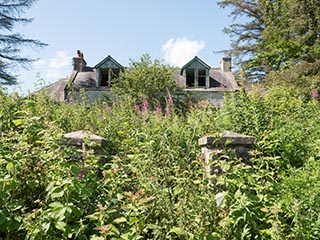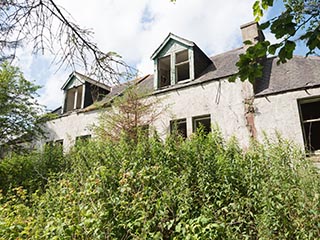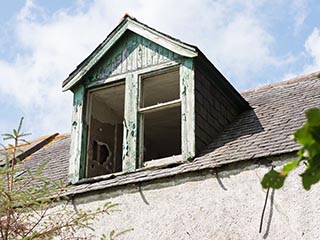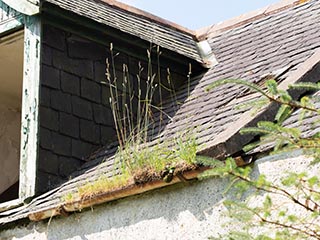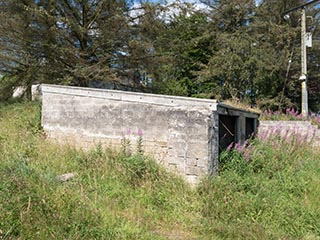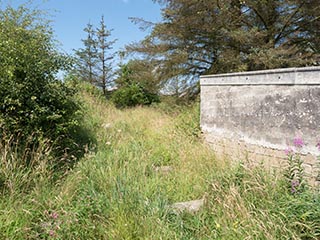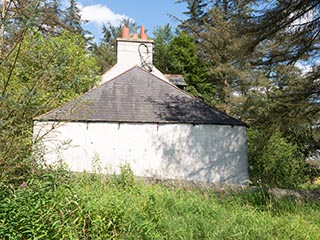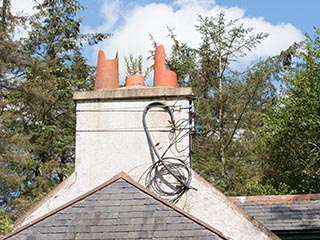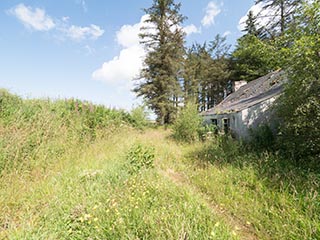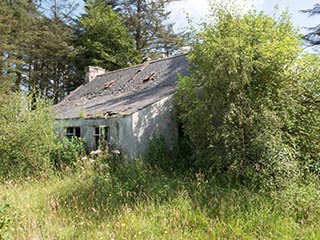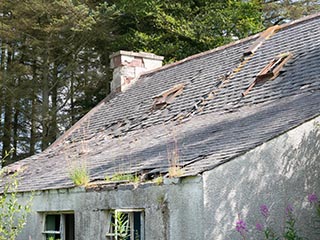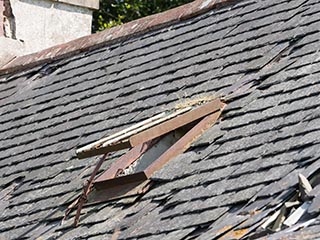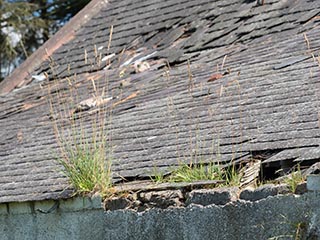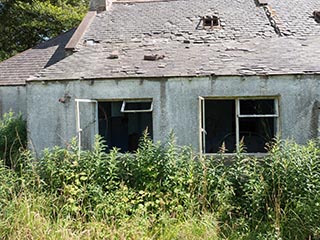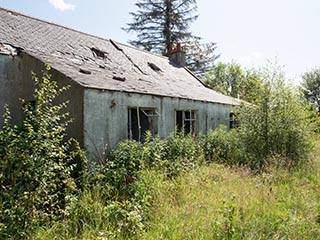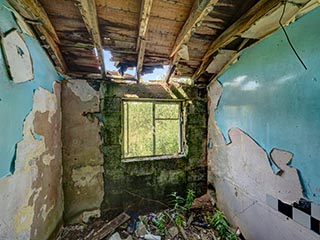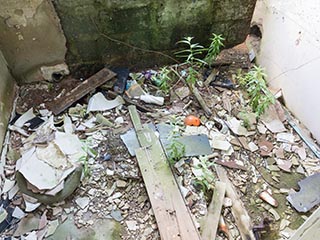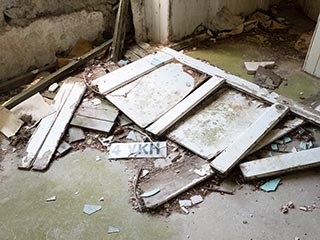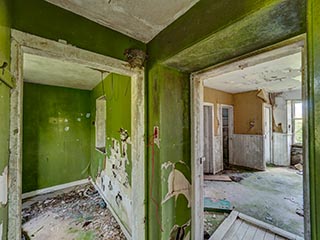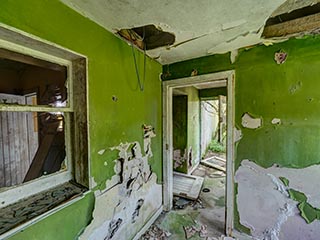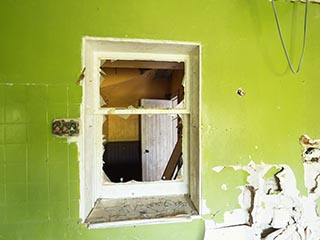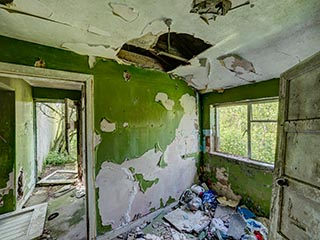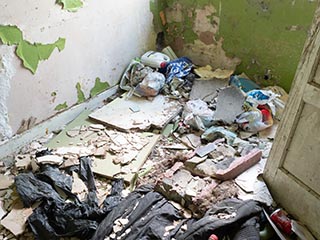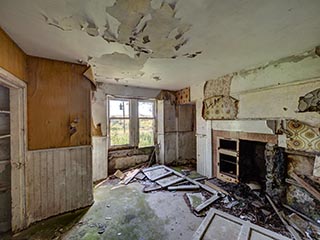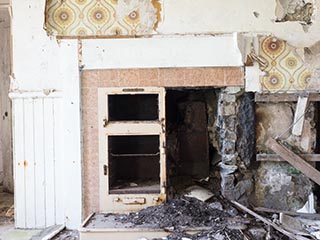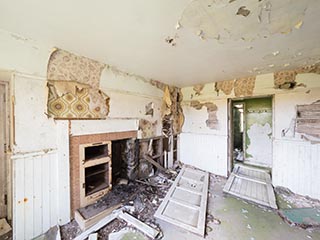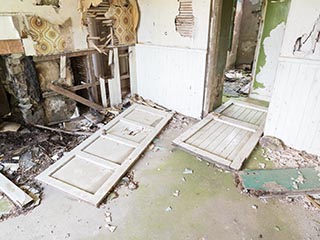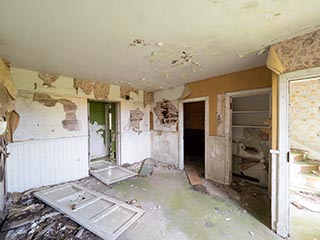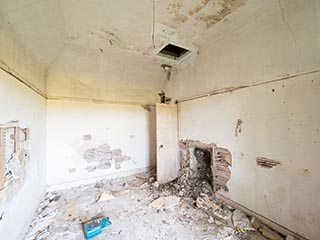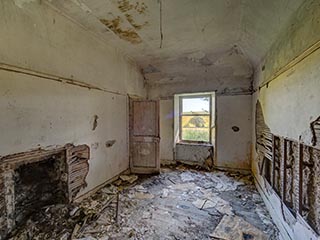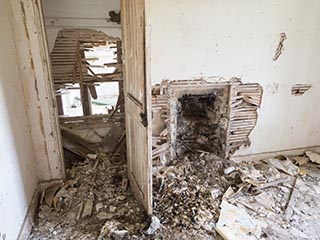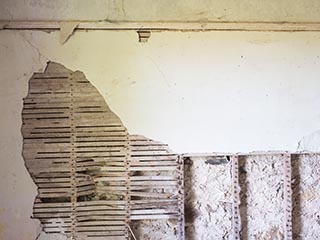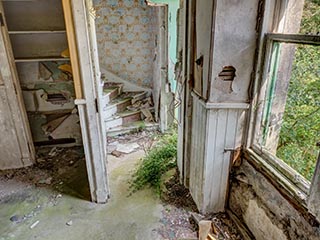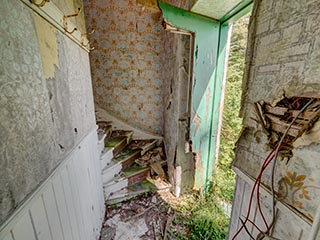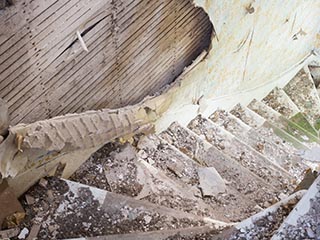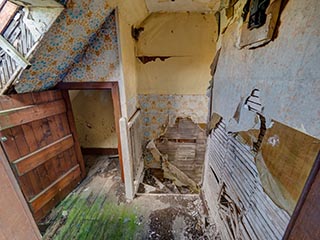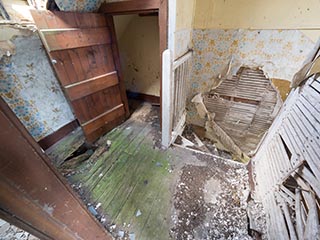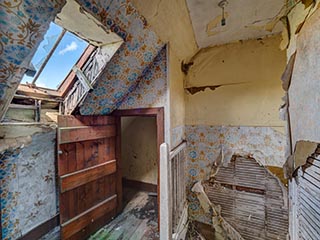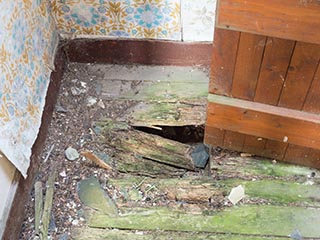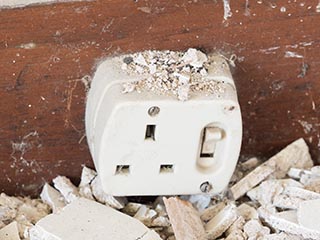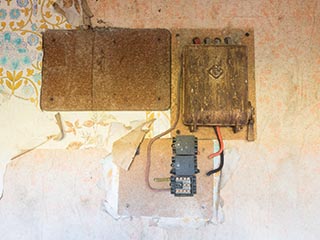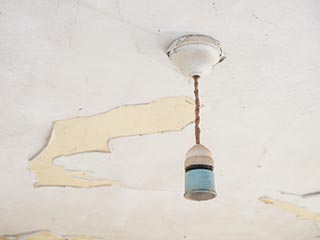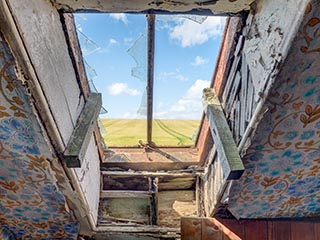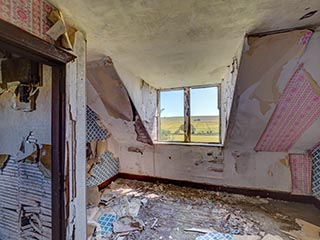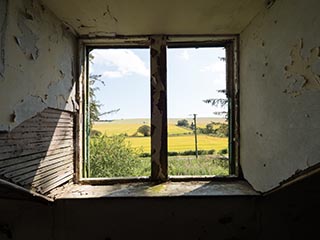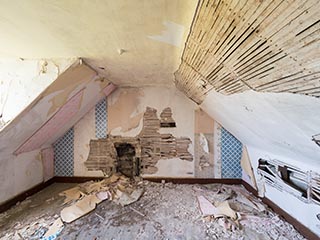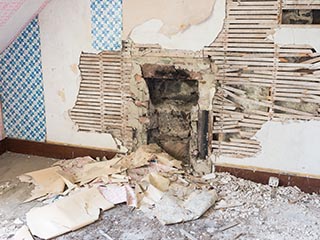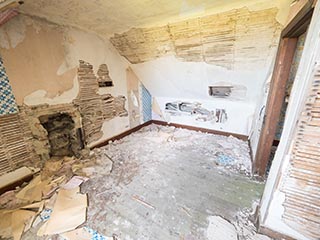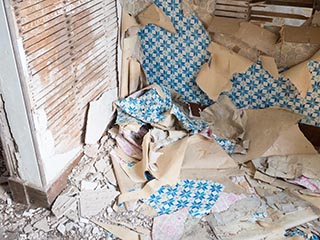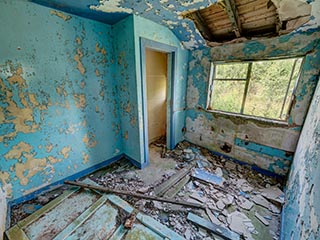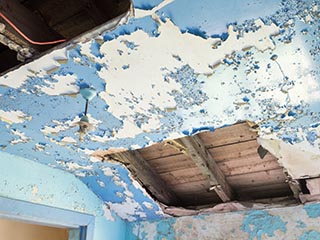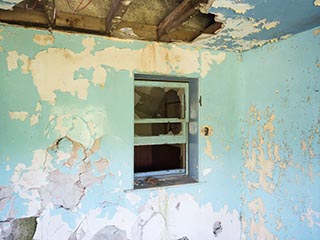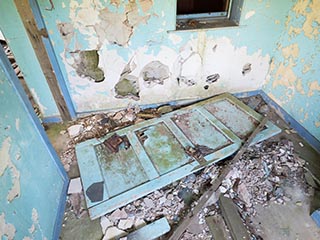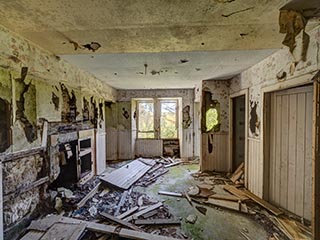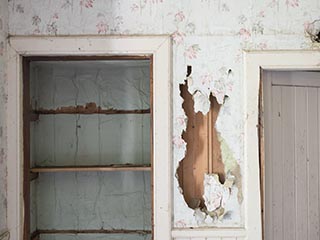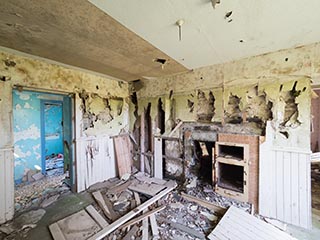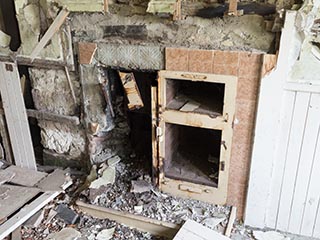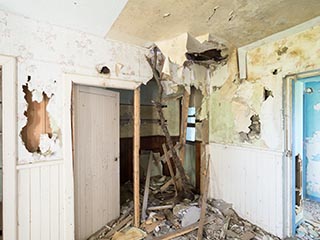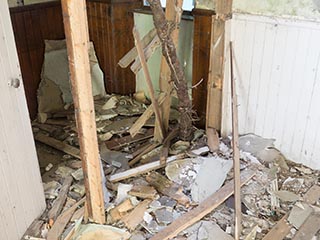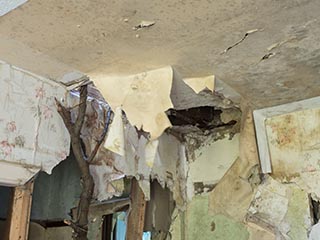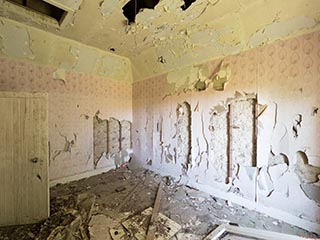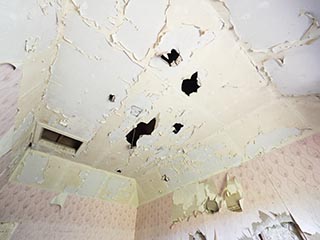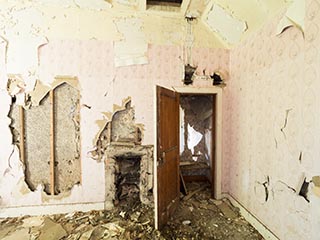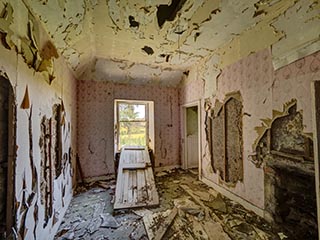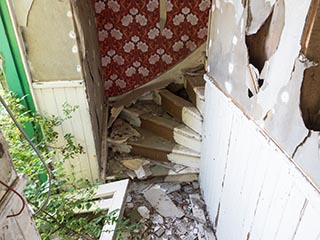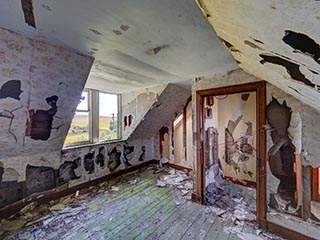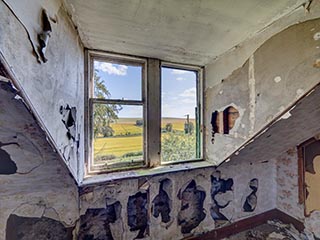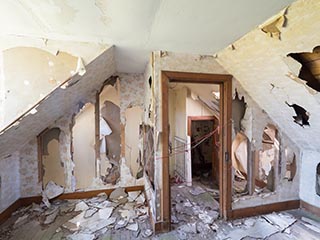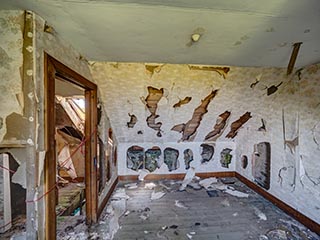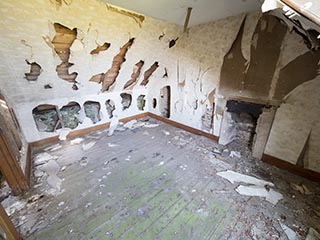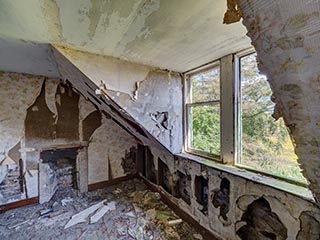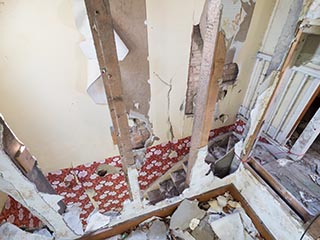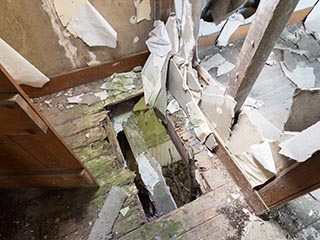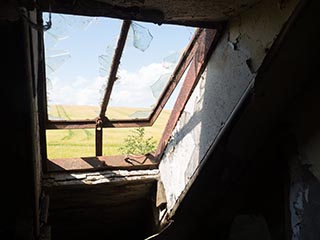I spotted this house by the side of the road as I was exploring northern Scotland in the summer of 2019. The broken windows, overgrown garden, and general dilapidation left little doubt that it was abandoned. I turned the car around, parked on a small patch of ground to the left of the house, and got out to take a closer look. It was a warm, sunny day, and the pleasant rural landscape and abundant wildflowers growing in front of the house made for a cheerful scene.
The house stood on a small block of land, with the road on one side and a field surrounding the other three. A small, low-roofed two-car garage stood at the front of the property. There were no other buildings nearby - I later used Google maps to determine that the closest was nearly 400 metres away. The nearest town was about 6 kilometres down the road.
The path to the front of the house was completely blocked by dense, thorny vegetation. Fortunately there was a path up the side, which was unobstructed apart from some long grass. I walked to the back of the house, and found a rear entrance behind a large bush. The door was broken, with its lower half lying on the ground, so I stepped through to explore the interior.
Unlike most abandoned Japanese houses that I've seen, the occupants had left almost nothing behind. There was a little garbage in the back rooms, but I think it was probably left by later visitors.
There was a window between one of the back rooms and the room in front, suggesting that the back rooms were added some time after the house was built. I remember a similar internal window in a house that I lived in as a small child.
Before I finished exploring the ground floor, I decided to have a look upstairs. The staircase led to a small landing, with a tiny closet, and a single garret room.
Up to this point I had assumed that the house had been a single dwelling, but the room only occupied half the roof space, and there was no way to access the other half. I realized that the building was actually a semi-detached - two separate houses sharing a common wall. This style of architecture is common in Britain, but I always thought it was used to save space. I was surprised to find such a building in the country, where there was no shortage of land. Perhaps the two households belonged to the same extended family, and they liked to live close together.
Once I'd finished photographing the left half of the building, I walked around the back and entered the second dwelling. As expected, it was a mirror-image of its neighbour. It was in somewhat worse condition, with holes smashed in many of the walls.
I saw some raspberries growing wild in the garden near the front of the house, and risked eating a few.
Looking at the photographs later on, I noticed one significant difference between the two halves of the building. The interior walls on left had old-fashioned lath and plaster construction, but those on the right were made from some kind of sheeting. (The back rooms on both side used sheeting, but they were probably a later addition.) I wondered if the right side was renovated at some stage, but I couldn't think of a likely reason for someone to completely replace the internal walls. Perhaps the house was build just as the construction industry was transitioning to new techniques.
